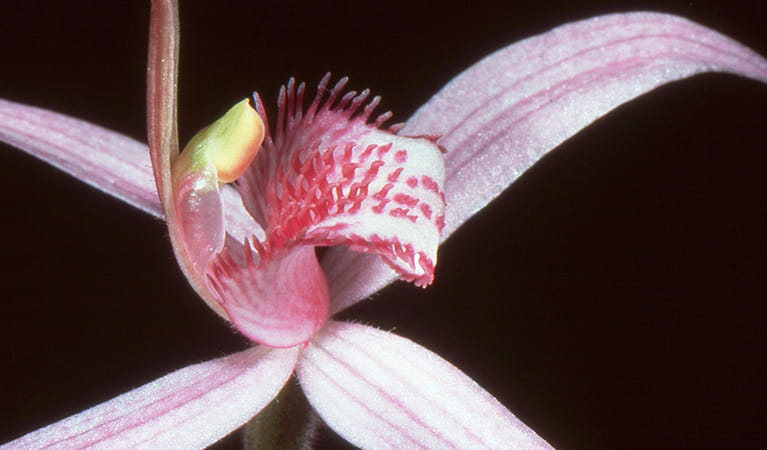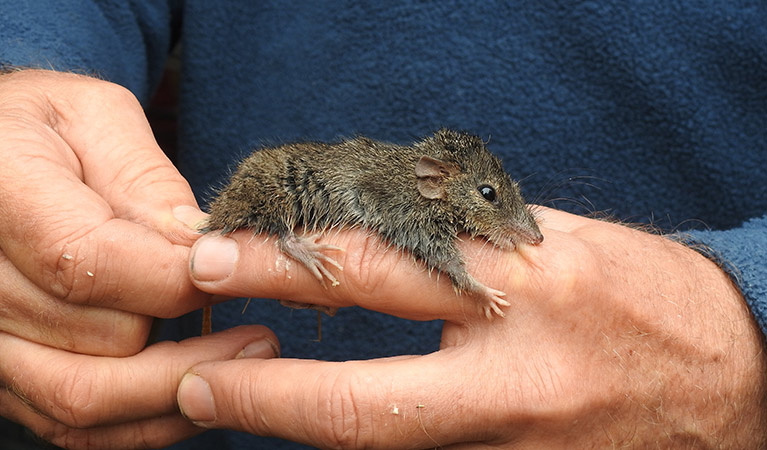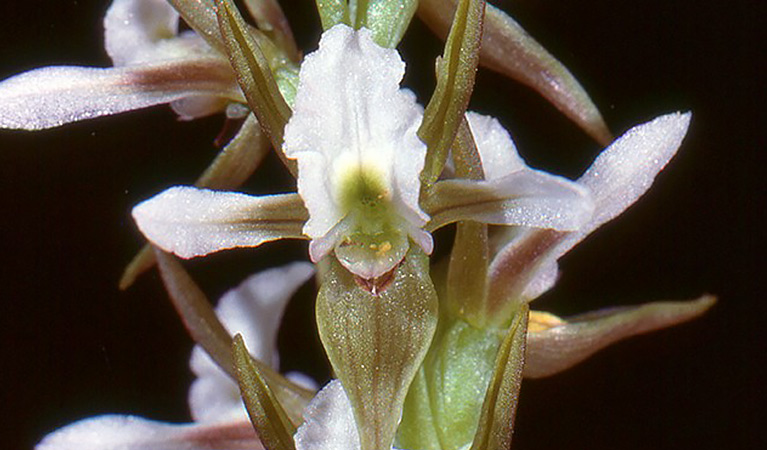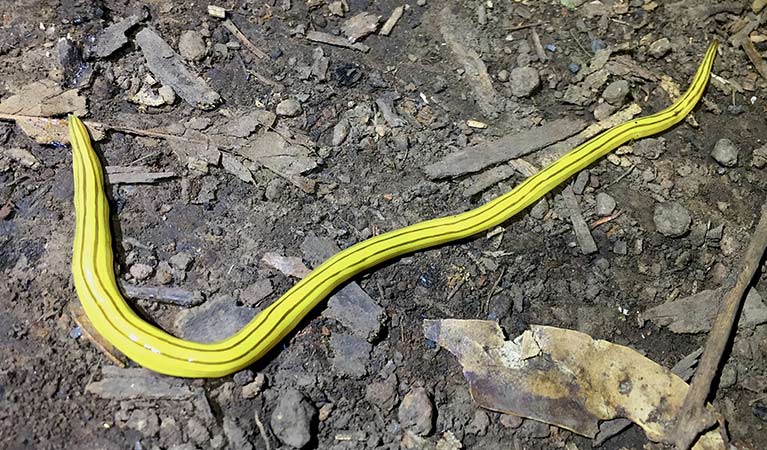Mount Canobolas after-fire recovery
Conservation efforts in Mount Canobolas State Conservation Area show there's hope for the recovery of our native and threatened plants and animals, after bushfires burnt nearly 70% of the park.
Read more about Mount Canobolas after-fire recovery
Mount Canobolas rises from the ashes
In early 2018, intense bushfires devastated Mount Canobolas State Conservation Area, near Orange in Central West NSW. Since then, NSW National Parks (NPWS) staff and volunteers from the Orange Field Naturalist and Conservation Society have joined forces to study the regeneration of the park’s plants and animals.
The dedicated group of botanists, environmental consultants, orchid specialists, insect taxonomists, bird experts and soil scientists set up 24 permanent monitoring sites to survey the park’s vegetation communities and animal species. They’ve also conducted surveys for orchids, heath plants, insectivorous bats and Aboriginal sites.
Survey results show the park’s unique ecosystem is bouncing back, with trees sprouting new growth and many plants and animals returning to the burnt areas. An amazing 79 new species that have never been seen in the park before, now call it home. Most exciting is the discovery of 2 new ground orchid species that exist nowhere else in the world: the pink spider orchid, and the Canobolas leek orchid. The Canobolas leek orchid was last seen in 1982, when it was an undescribed species.
The remarkable results include:
- 2 new ground orchid species discovered that exist only at Mount Canobolas
- 79 new species recorded in the park including birds, reptiles, mammals, amphibians, invertebrates, plants and fungi
- Increased number of known plant species from 361 to 479
- Increased number of known animal species from 129 to 153
- A total of around 950 different species recorded in the park, including insects.
The results also show how NPWS and the community can work together to further expand our natural history knowledge of our parks.
Mount Canobolas a hotspot for biodiversity
Mount Canobolas State Conservation Area is home to 13 state and federally listed threatened species and Endangered Ecological Communities. This is a very high concentration of threatened species within a relatively small area.
The post-fire work has identified 22 more potential threatened or endangered species, and has highlighted the park’s vital conservation value. This includes:
- Very high concentration of species, including threatened species, within its small area of 1,672ha
- 10 species or communities that don’t occur anywhere else in the world
- Over 150 unique, rare and regionally significant species and communities
- A crucial climate change refuge for the region’s species, that will move towards and up the mountain and the climate warms
- A unique volcanic landscape with the largest remnant of sub-alpine vegetation in Central West NSW
- Isolated from other highland areas for millennia, enabling evolution of distinctive plants, animals and ecosystems.




